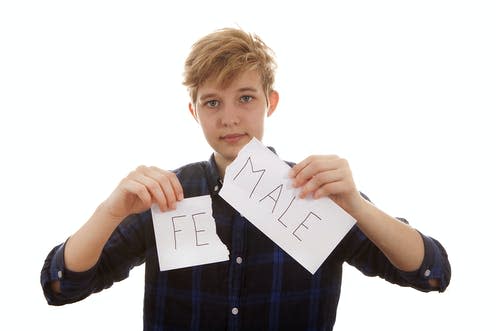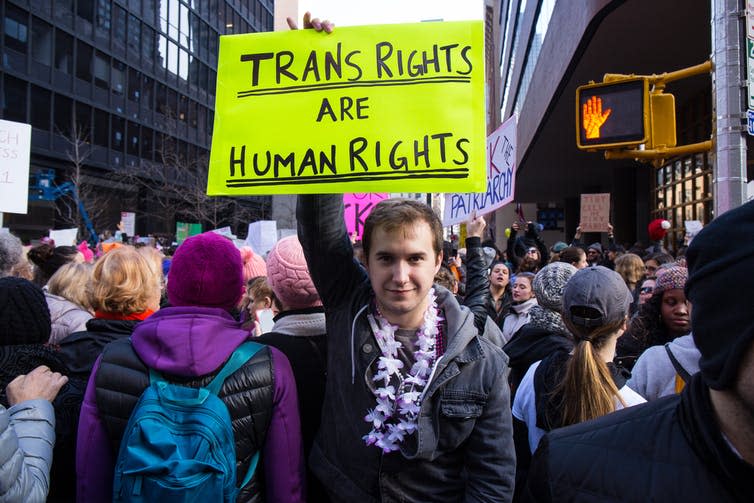Transgender and gender diverse people up to six times more likely to be autistic – new study

There is a lot of evidence to suggest that men are more likely to be autistic than women. For every woman who is autistic, evidence suggests that as many as four men are autistic. But studies investigating this often use the terms “sex assigned at birth” and “gender identity” interchangeably.
When someone is born, they are assigned a sex, typically boy or girl, based on their genitals. But gender identity is a person’s own sense of their gender, which may differ from the sex they were assigned at birth.
We use the term “cisgender” to refer to people whose sex corresponds to their gender. And we use the term “transgender and gender diverse” to refer to people whose gender is different from their sex and to describe the diversity of gender identities beyond the binary.
There is some evidence to suggest that transgender and gender-diverse people are more likely to be autistic than cisgender people. But the evidence has largely come from small studies, typically conducted using people who are referred to gender-identity clinics.
Not all transgender and gender-diverse people are or need to be referred to gender-identity clinics. So, is the likelihood of autism higher in transgender and gender-diverse people, regardless of whether they were referred to gender identity clinics?
To answer this question, we gained access to five datasets, where participants had provided information about their gender and diagnostic information of autism and other neurodevelopmental and psychiatric conditions. They also completed a questionnaire about autistic traits which are non-clinical features of autism. We obtained data from over 600,000 adults from different countries and at different ages.
In our latest study, published in Nature Communications, we found that transgender and gender-diverse adults were between three and six times more likely to be diagnosed as autistic compared with cisgender adults. But this only includes diagnosed autism – and many adults on the spectrum may be undiagnosed. We estimate that around 1-1.5% of the global population may be autistic. This would suggest that somewhere between 3-9% of transgender and gender-diverse adults may be autistic.
We also found that, regardless of an autism diagnosis, transgender and gender-diverse adults were also more likely to report a higher level of autistic traits compared with cisgender adults. We know that autism may present slightly differently in cisgender men and women. Yet we don’t know if autism presents differently in transgender and gender-diverse individuals – and this is something we need to understand to ensure that doctors can better identify autism in this group.
But it was not just autism diagnoses that were elevated in this group. Indeed, we find that diagnoses of conditions such as depression, attention deficit hyperactivity disorder (ADHD), and obsessive-compulsive disorder (OCD) were also elevated in transgender and gender-diverse adults compared with cisgender adults.
Poorly understood needs
The needs of transgender and gender-diverse people remain poorly understood. They regularly face discrimination, abuse and harassment. And in many places their identity is questioned with little legal safeguarding of their rights. Anyone, regardless of their gender, who has faced such adversities is likely to have poor mental health. As researchers, we must identify and address the factors that contribute to poor mental health in this group.

We recognise that grouping all transgender and gender-diverse people into one group is reductionist. Different people identify as transgender and gender-diverse for very different reasons – and their needs will differ. In the current study, we were limited by how gender was recorded – we need better methods to record gender to better capture the differing mental health needs in this group of people. It is an urgent priority to understand the clinical needs of this vulnerable group so as to provide the most appropriate support.
This article is republished from The Conversation under a Creative Commons license. Read the original article.

The authors do not work for, consult, own shares in or receive funding from any company or organisation that would benefit from this article, and have disclosed no relevant affiliations beyond their academic appointment.

 Yahoo News
Yahoo News 
